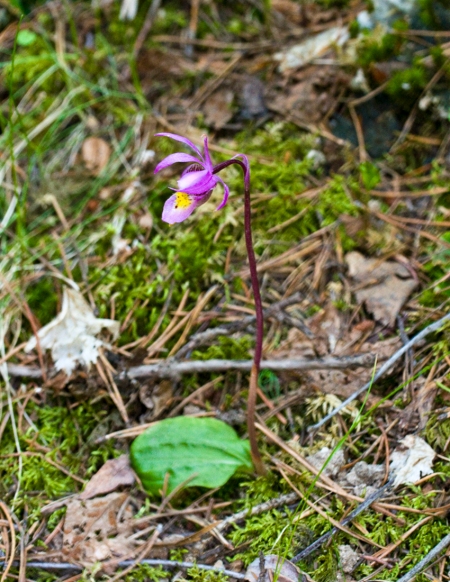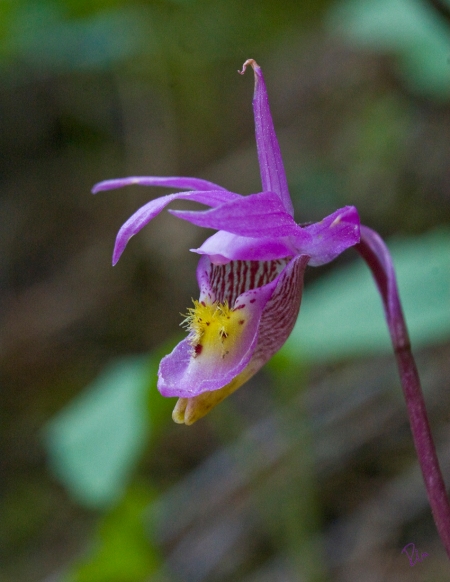The last 3 months have provided a plethora of spring flora and fauna for this blog. The summer solstice officially kicked off today at 4:28 a.m. MT. This occurred when the North Pole tipped closer to the sun than on any other day of 2010 marking the beginning of summer and the end of spring in the Northern Hemisphere.
On the first day of spring I was excited to see my first Mourning Cloak Butterfly sunning on a snowbank. Now just three months later the world has changed dramatically. The early cautious spring stirrings of life have given way to bold celebrations. I celebrated this Spring’s passing by stalking and photographing a rare and elusive Calypso orchid (Calypso bulbosa) also known as a fairy slipper or Venus’s slipper. Calypso Orchids are difficult to spot among the other plant life on the forest floor and they often grow singly and scattered across large (hard to reach) areas. According to the Rocky Mountain Wildflowers Pocket Guide “You should consider yourself very lucky if you see this spectacular flower”. After a two-mile hike and hours of forest floor peeping I finally found this lone beauty for you hiding on the Ceran St. Vrain trail so consider yourself lucky today…
Here are some facts about this perennial member of the orchid family that I found deep in the Colorado montane forest:
-It is the only species currently classified in the genus Calypso and takes its name from the Greek signifying concealment. The specific name, bulbosa, refers to its bulb-like corms.
-Although the calypso orchid’s distribution is wide, it is very susceptible to disturbance, and is therefore classified as threatened or endangered in several U. S. states.
-This flower uses a “pollination by deception” strategy. It attracts insects to anther-like yellow hairs at the entrance to the pouch and forked nectary-like structures at the end of the pouch. despite its fancy makeup this beautiful fraud produces no nectar that would nourish insects. This is a Darwinishly clever way to save the biological cost of selling nectar or pollen to pollinating insects!
-As with most orchids Calypso depends on a symbiotic relationship with a fungus. In this case the seed of Calypso requires a fungal partner for development. Many fungi are capable of forming this symbiotic relationship with the tiny seed.
-According to Montana Plant Life Calypso bulbosa is used as a medicine plant. The bulbs have been used by the Thompson River Indians for the treatment of mild epilepsy.
On to summer in the Rockies!


July 6, 2013 at 12:53 am |
[…] a 2.8 mi/4.5 km hike up the Wild Basin Trail in Rocky Mountain National Park I was rewarded with my second encounter with this uncommon 4-6in/10-15cm […]